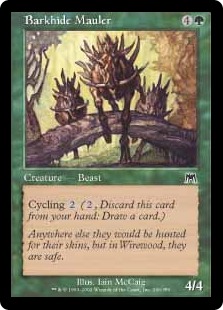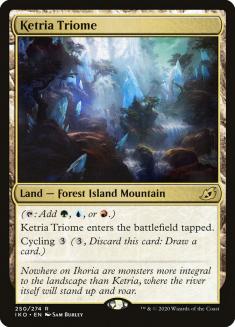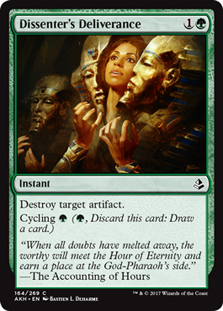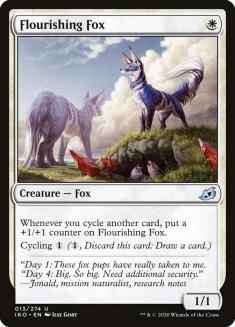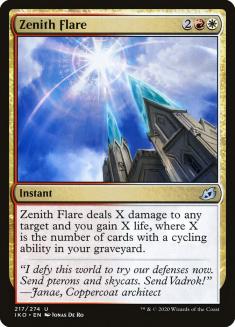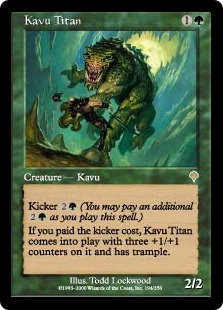Hello, and welcome to this edition of Sullivan’s Satchel. In a radical departure from how the column generally works, I’m doing a deep dive on a single question that really sparked some interest from me. Part of that is the question itself, some of it is a lull of “new” stuff to talk about, some of it is a dearth of quality questions, the responsibility for which literally falls on you, the reader. I’m not sure I’m going to be doing this with much frequency, but for this week this is where I’m at.
The usual flow of the article: you can submit questions to [email protected] or DM me on Twitter @BasicMountain. Typically I answer a handful of questions, and one question is selected as Question of the Week, with its author winning $25 in SCG credit. Naturally, that goes to the lone question I’m answering this week.
Parth asks:
This is not the first time I’ve been asked about my relative coolness on cycling. I think this position stands out because cycling is something with a lot of “critical acclaim” among more established players, while also being something that WotC believes in strongly enough to feature with regularity. Not only that, but it appears both as a build around (“cycling matters” in Ikoria) and as something to fill out a file. I’m used to some of my design sensibilities being at odds with competitive players, but this might be the only spot where my opinion goes against both that demographic and the design team at large. I’d like to do a deeper dive on my perspective and areas of criticism, not out of any interest in winning some imaginary argument, but because I think these spots are interesting, and rare to discuss publicly (it is not like a design team member who didn’t like cycling can write an article about that, after all.)
I understand the desire for cycling at a baseline. Magic is a game with a lot of variance, and sometimes that variance manifests with one player not getting off the ground. That is frustrating and can make the game feel illegitimate, and so ways of pushing back against that without stripping all the volatility out of the game engine is desirable. Cycling can help manage both ends — a new card when you’re looking for land early, and whatever the spell is later. What’s more, you actually have to make due with whatever the spell is, and there are times where neither “cycling 2” nor a five-mana 4/4 is the card you want, so Barkhide Mauler isn’t some freeroll even though it has a lot of modal utility. So far so good.
Before going in further, I believe that each added mana on cycling matters a lot, and so I’m much more talking about “cycling 1” than cycling as a whole. Even though I think “cycling 3” doesn’t add much rate on cards in practice and is relatively safe even in large doses, those cards don’t do much to alleviate the land screw stuff (as an example of how little rate it adds, it is common to play Triomes in your opening hand as lands even if the hand is at some risk of flooding out, since the chance you could stumble by playing it tapped is a more compelling incentive than the chance you might cycle it at some future date.) So any discussion of the ostensible benefits naturally comes with much higher costs regarding the elements I don’t like.
A big issue with cycling is the lack of transparency to less experienced players. People put cards in their deck for what they do, and so the notion of cycling appealing, useful cards (Expunge, Cast Out, Neutralize, etc.) just doesn’t register as A Thing To Do for a lot of players, especially since cycling doesn’t guarantee hitting the land you want. It’s fine to say that’s something that only impacts very novice players, but those are also the players most in need of mechanics that smooth things out the way you want. This isn’t just theory — I challenge the suspicious reader to go to a prerelease and watch new players engage with cycling. Designs that are more explicitly situational like Dissenter’s Deliverance are better on this front than the cards listed above, but are still relatively opaque to a lot of players.
Even in the “good” case, cycling comes with a lot of baggage. The mechanic is much less effective for flattening out the worst ends of Magic’s variance relative to it ensuring that the same cards are drawn at a much higher frequency across all games. You can’t separate the initially smoothing of a cycled Censor from the broad increased consistency that the player finds Best Card X over the course of the sum of all games. Given how insidious that can be towards the general replayability of games, and given that even the cheapest cyclers don’t promise the player will hit their initial land drops, and the tonal color bleed of having that much “instant-speed card draw” available to all the colors, the ratio of “doing the thing you want it to do” compared to “unrelated drawbacks and issues” seems way off to me.
I don’t think cycling 1 is necessarily ruinous in small doses, but I really dislike the “cycling matters” experience. The combination of how frequently the games play out the same way multiplied by how little emotional investment the cycling player has in their draw step (its hard to care too much when you’re looking at three or four cards a turn, anyway) makes for an experience that isn’t particularly fun or engaging. I think Flourishing Fox and Zenith Flare as core payouts indulge the worst parts of what I’m speaking to here, but even if they were more engaging designs, the issues would persist.
My ideal world for cycling would be something like a handful of “cycling 2” and “cycling 3” designs in a file, and very rarely if ever exploring the “cycling matters” space. Cycling greater than 1 means you have to really mean it to play with the card, that each additional card with cycling you play represents a significant opportunity cost, and that the player has some lands in the first place before the player can decide that a cycling card is the inflection point to keep a hand they’d otherwise mulligan.
All of this brings up the question — what should designs looking to mitigate the variance concerns look like? At root cycling is a modal ability, and there are lots of ways to give cards more than one mode. Kicker is a great example of this — cards like Kavu Titan are good early, and good late, and present the controller with a number of stimulating decisions on how to leverage the card. What’s better, designs like Kavu Titan encourage players to add more lands to their deck; they organically work towards the solution you want in all games, not just the games where the card happens to be drawn. This may not be as viscerally satisfying as cycling a card to hit your third land on a speculative hand, but in the aggregate, modal, anti-flood cards are more effective at producing more satisfying games across the board without nearly the same issues that cycling engenders, and with no issue of diminishing returns.
Kicker has some level of opacity, too. It’s asking a lot for players to sense that they should be adding a land or two to their deck, even if its correct. If you want to go with a more heavy-handed approach, the double-faced cards from Zendikar Rising are a great execution. I’ve mentioned Jwari Disruption as one of my favorite designs of the last few years. It’s a transparent decision tree for players of all ability levels, and it has way more efficacy at actually finding lands (you know, because it is a land) when that’s the thing you need.
In spite of being a land fully 100% of the time when that’s what the player wants, it actually engenders more satisfying variance than cycling because there are plenty of times where either a tapped Island or a two mana Force Spike isn’t the thing you really want, and you have to make due with one of the two modes. This is really the best of both worlds — more consistently off the ground, but not finding your best cards every game, nor completely letting you off the hook for choosing to play with the card in the first place.
That last bit speaks to a larger, maybe my largest, criticism of cycling. The most fun part of Magic is the draw step, and mechanics that dull the enthusiasm (be it positive or negative) work against the primary axis for excitement and emotional engagement in the game. Cards you just dump into your graveyard for a single mana for a new card are a powerful anesthetic against that. Again, it isn’t ruinous in small doses, at the right rate, but I think Magic has overindulged the mechanic to the determent of the game overall in pursuit of goals that could achieved more effectively and with less costs than cycling.


